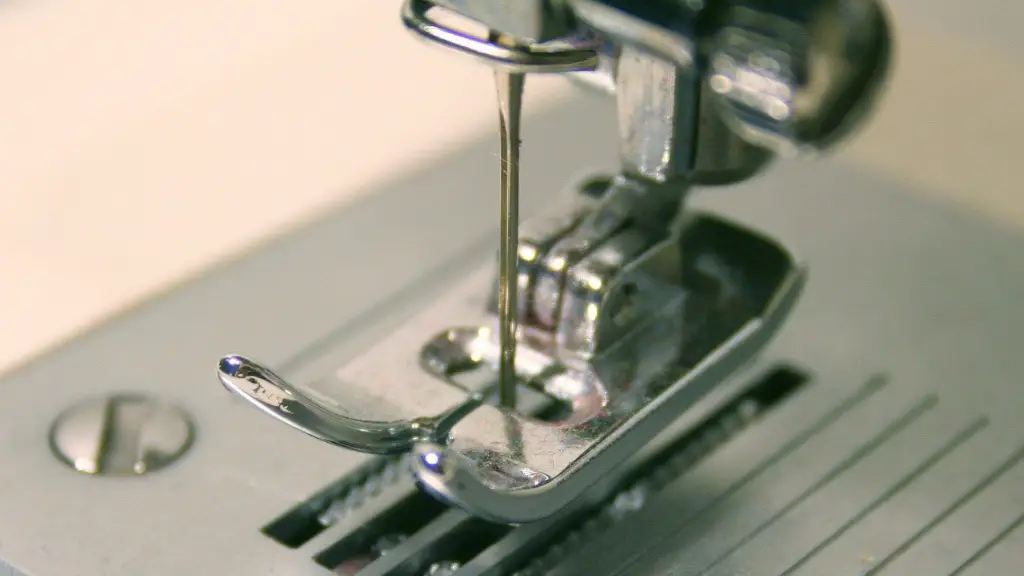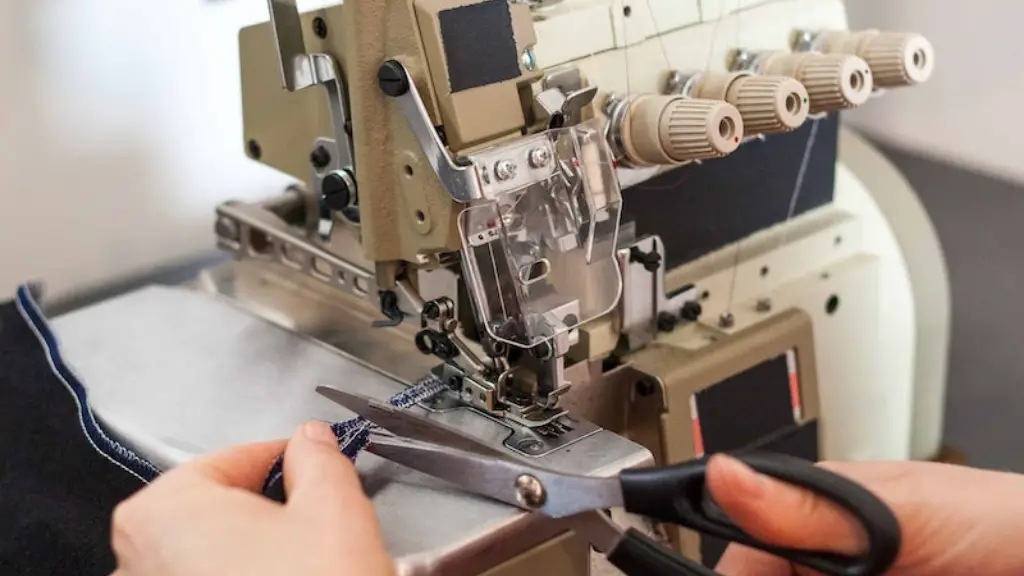When it comes to sewing machines, do all of them have a serger attached? The answer to this question is no, not all sewing machines have a serger. Some machines may have different types of serger functionalities that are separate from the main machine, but not all machines have a serger.
A serger is a type of sewing machine that is used to stitch seams, overcast raw edges of fabric, and trim excess fabric. This can be done in one operation without having to re-thread the machine or make additional passes over the fabric. It is sometimes also referred to as an overlock machine because it locks the stitches it makes in a loop.
The main difference between a serger and a standard machine is the way in which the seams are sewn. A regular machine creates a straight stitch, while a serger uses a pattern of stitches to hold the fabric together. This gives the fabric a professional, clean finish. It also helps keep fabric from fraying and unraveling.
Most industrial and professional-grade machines come with a serger. However, many home machines do not come with a serger, and some machines have an optional serger that needs to be purchased separately. So, it is possible that a sewing machine may have a serger, but it is not always the case.
The cost of a serger varies depending on the type and model. Most sergers cost between $100 and $500, while the cost of the sewing machine will be additional. If a person is looking to purchase a machine that includes a serger, it is important to read the product description carefully to make sure it is included.
It is also important to consider what type of sewing will be done before purchasing a machine. If a person plans to do a lot of professional-grade work, such as making garments, curtains, or quilts, it may be worth investing in a machine that includes a serger. The serger will give a cleaner finish and will make the process of sewing a lot easier.
For those who are just starting out and are not sure if they need a serger, an alternative option would be to purchase a standard sewing machine that does not have a serger. Many beginner machines are very affordable and will still do a good job for smaller projects. It is also possible to upgrade to a more advanced machine with a serger at a later date if desired.
Types of Sergers
Sergers come in several different types, each with its own set of features. There are four-thread sergers, which are most common, as well as five-thread, three-thread, and two-thread. A four-thread serger is the most popular because it is the most versatile. It provides strong and stretchable seam finishes and is suitable for most projects.
Three- and two-thread sergers are usually used for lightweight fabrics. They are not as durable or as strong, but they are often the most affordable option and can still provide a professional finish. Five-thread sergers provide the most durable finish, but they tend to be the most expensive and require more thread and tension settings to set up.
It is also important to consider the type of stitch a serger can sew. Sergers can sew adjustable stitch width, differential feed, and narrow or wide rolled hem stitches. Each type of stitch has its own purpose, from creating decorative embellishments to creating strong and secure seams. Knowing what type of stitch will be used most often can help determine which type of serger is best.
What Can a Serger Do?
A serger can do more than just sew seams. It can also be used to overlock, trim, finish edges, and hem fabric. It is a great tool for any project where a professional finish is desired. Even if the machine does not come with a serger attachment, there are some devices that can be purchased separately to provide similar functionality.
Sergers can also be used to add decorative touches to garments, such as using rolled hems to create cuffs and collars. They can also be used to join two pieces of fabric together without having to sew the edges separately, which is great for making pillows, curtains, and quilts. Additionally, they can be used to create a professional edge on any type of fabric, from light knits to heavy denim.
Most sergers also come with a variety of stitch settings, so they can be used to create almost any type of seam or edge. Whether it’s a professional finish or a decorative touch, a serger can be used to give any project that professional look.
Maintenance and Care for a Serger
To ensure that the serger continues to work properly, it is important to maintain it properly. It should be cleaned and oiled regularly according to the manufacturer’s instructions. It is also important to check the tension regularly and replace worn parts as needed.
Sergers should also be protected from dust and debris. Not only can dust and debris impede the functioning of the machine, but it can also cause rust and other damage if not removed regularly. It is also important to store the machine in a safe, dry place.
Finally, it is important to use the proper thread and needles for the machine. Different types of thread and needles require specific tensions and stitch settings, so it is important to read the manufacturer’s instructions and select the right type of thread and needle for the machine.
When to Use a Serger
In general, a serger should be used when a professional finish is desired. This could be for garments, quilts, curtains, or any other projects that require a clean and durable finish. However, for lighter fabric and simpler projects, a standard sewing machine may be sufficient.
When deciding whether or not to use a serger, consider the type of project being done and the desired finish. A serger will provide a professional finish on heavier fabrics, but it may be too much for a simple project. If unsure, it is best to consult with a professional or do some research on the type of machine and type of stitch best suited for the project.
Sergers vs. Sewing Machines
Sergers are generally better suited for professional-grade projects, while sewing machines are better for more basic projects. For example, sewing machines are better for projects that require zippers, buttonholes, and other decorative stitches and finishes. Sergers are better for more durable seams on heavier fabrics, as well as for projects that require a professional edge.
In terms of cost, sewing machines tend to be more affordable than sergers. However, the cost of a machine can vary depending on the type and features it has. Those who are just starting out or who plan to do mainly light projects may want to consider just purchasing a standard machine.
When deciding between a sewing machine and a serger, consider the type of sewing that will be done and the desired result. While not all machines will come with a serger attachment, those who plan to do a lot of professional-grade work may want to invest in a machine that does.
Advantages and Disadvantages of a Serger
Like all tools, there are advantages and disadvantages to using a serger. The main advantage of using a serger is the professional finish it provides. It is more durable and secure than a straight stitch, and it can provide a decorative edge on any type of fabric.
The main disadvantage is the cost. Sergers tend to be more expensive than regular machines and require more thread and settings to set up. Additionally, they can be difficult to maintain and require more frequent cleaning and oiling. It is also important to use the right type of thread and needle for the machine, so it is important to read the manufacturer’s instructions.
In summary, not all sewing machines have a serger attached, but it is possible to purchase one separately. The cost of a serger varies depending on the type and model, so it is important to read the product description carefully. Additionally, the type of sewing that will be done should be considered before investing in a machine, as a serger is better suited for professional-grade projects.





